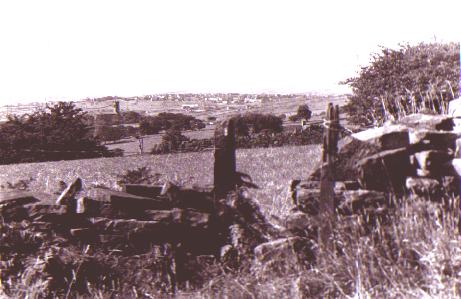
'The Snoddy' or 'Snoddy Mountain' was, and still is, a source of fascination to errant kids (in and out of school holidays!). Its bare, eroded slopes fall almost sheer down to the beck below. Kids climb up and kids fall down and one marvels at the lack of serious injury! Until recently I believed its odd name to be merely a product of childish imagination, until while chatting with some local pensioners I discovered that the spot was known as 'the Snoddy' in their childhood days also! A little research into Yorkshire dialect provides a possible explanation. An old Yorkshire expression 'thi top is snod lad' refers to baldness. The meaning of the word when applied to these bare, shaly slopes, becomes immediately apparent.
From the summit of 'the Snoddy' various routes may be taken. All of them lead down the main wood to arrive eventually at Horse Close Bridge. The rambler may descend to the beck, noting the small coal seam in the slope above, and ascend the opposite slope, then turning right down Royds Hall Great Wood. Alternatively you may remain of the 'Snoddy' side of the beck, and continue on down through Jagger Park birch woods to0 meet up with the route down the main wood at crossing further down. (Jagger Park Wood, although across the boundary in Calderdale, is nevertheless owned by Bradford)
After approximately a mile of woodland (at its best in summer), you will eventually cross a small footbridge over a feeder stream to emerge at Horse Close Bridge, better known as
JUDY BRIG.
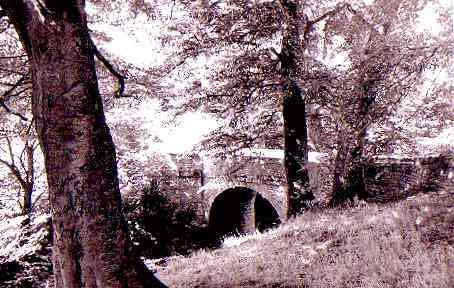
HORSE CLOSE BRIDGE ('JUDY BRIG')
This is a wonderful spot. The age of the old bridge is uncertain, although much of the masonry looks eighteenth century. It carries a small track leading to High Fernley and Wyke in one direction and to Norwood Green in the other. This is the sole surviving stretch (in its original state) of what was once a major packhorse road connecting the piece hall cloth markets of Bradford and Halifax. As one sits on the parapet of the bridge one can almost hear the jingle of packhorse bells. The bridge has a fascinating collection of masons marks which are reproduced here....
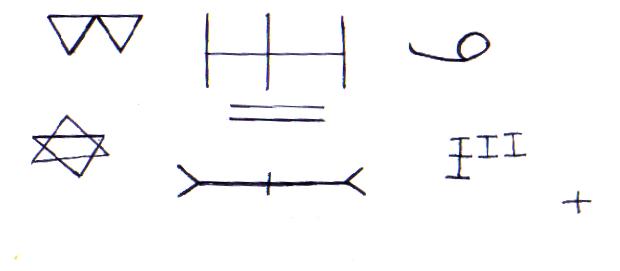
JUDY BRIG MASONS MARKS
Like most old places in remote spots Judy Brig has a reputation for being haunted. Headless horsemen apart, I have heard the most interesting tale of a steelworker at the old Low Moor Alloy Steelworks, who passing by the bridge very early one morning encountered a man in thigh length boots with a dog, who promptly vanished when approached. Whether or not there is any substance in this story remains to be seen.
Near to this spot in the last century lived the North family, in a cottage now demolished. They ran public gardens and a shop where you could purchase ginger beer, pop and parkin pigs. Postcards were printed depicting Judy Brig and the spot became a popular victorian resort.
The most noted member of the North family was Mrs. North, better known as 'Gurt Judy'. It is from her that the woods take their popular (if unofficial) name. She had a son known as 'John o' Judy's' who sold green groceries from a donkey cart. Another son was Bill North, who was a pageboy to the Reverend Lamplugh Wickham Hird at Low Moor House. He was a first class landscape gardener. It is reported that the gardens at Judy Brig had been in existence for over a hundred years when they were broken up in 1870. A large pear tree stood in front of the house which in one year produced 640 pounds of pears selling at tuppence a pound.
There were many stories told about 'Gurt Judy'. On one occasion it is reported that the Vicar of Wibsey paid a visit to Judy Brig Gardens and made a choice of a beautiful plant which he was taking away when he was reminded by Mrs North that he hadn't yet paid for it. 'Oh no', said the vicar, 'I must first see whether it is likely to live or not'. Some time later Judy went to Wibsey Chapel (Holy Trinity), to have her son (Bill) baptised. After the Christening Judy was about to leave the vestry when the vicar called her back and asked for his fee. 'Oh no Mr. Powell', replied Judy, 'I must first see whether he's likely to thrive or not. That's the way you did with my plant!'
Next Page
Previous Page


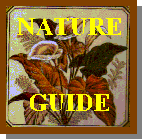

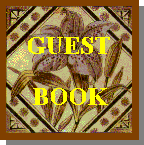
copyright © Jim Jarratt 2002
This is a wonderful spot. The age of the old bridge is uncertain, although much of the masonry looks eighteenth century. It carries a small track leading to High Fernley and Wyke in one direction and to Norwood Green in the other. This is the sole surviving stretch (in its original state) of what was once a major packhorse road connecting the piece hall cloth markets of Bradford and Halifax. As one sits on the parapet of the bridge one can almost hear the jingle of packhorse bells. The bridge has a fascinating collection of masons marks which are reproduced here....

JUDY BRIG MASONS MARKS
Like most old places in remote spots Judy Brig has a reputation for being haunted. Headless horsemen apart, I have heard the most interesting tale of a steelworker at the old Low Moor Alloy Steelworks, who passing by the bridge very early one morning encountered a man in thigh length boots with a dog, who promptly vanished when approached. Whether or not there is any substance in this story remains to be seen.
Near to this spot in the last century lived the North family, in a cottage now demolished. They ran public gardens and a shop where you could purchase ginger beer, pop and parkin pigs. Postcards were printed depicting Judy Brig and the spot became a popular victorian resort.
The most noted member of the North family was Mrs. North, better known as 'Gurt Judy'. It is from her that the woods take their popular (if unofficial) name. She had a son known as 'John o' Judy's' who sold green groceries from a donkey cart. Another son was Bill North, who was a pageboy to the Reverend Lamplugh Wickham Hird at Low Moor House. He was a first class landscape gardener. It is reported that the gardens at Judy Brig had been in existence for over a hundred years when they were broken up in 1870. A large pear tree stood in front of the house which in one year produced 640 pounds of pears selling at tuppence a pound.
There were many stories told about 'Gurt Judy'. On one occasion it is reported that the Vicar of Wibsey paid a visit to Judy Brig Gardens and made a choice of a beautiful plant which he was taking away when he was reminded by Mrs North that he hadn't yet paid for it. 'Oh no', said the vicar, 'I must first see whether it is likely to live or not'. Some time later Judy went to Wibsey Chapel (Holy Trinity), to have her son (Bill) baptised. After the Christening Judy was about to leave the vestry when the vicar called her back and asked for his fee. 'Oh no Mr. Powell', replied Judy, 'I must first see whether he's likely to thrive or not. That's the way you did with my plant!'
Next Page
Previous Page





copyright © Jim Jarratt 2002
Like most old places in remote spots Judy Brig has a reputation for being haunted. Headless horsemen apart, I have heard the most interesting tale of a steelworker at the old Low Moor Alloy Steelworks, who passing by the bridge very early one morning encountered a man in thigh length boots with a dog, who promptly vanished when approached. Whether or not there is any substance in this story remains to be seen. Near to this spot in the last century lived the North family, in a cottage now demolished. They ran public gardens and a shop where you could purchase ginger beer, pop and parkin pigs. Postcards were printed depicting Judy Brig and the spot became a popular victorian resort. The most noted member of the North family was Mrs. North, better known as 'Gurt Judy'. It is from her that the woods take their popular (if unofficial) name. She had a son known as 'John o' Judy's' who sold green groceries from a donkey cart. Another son was Bill North, who was a pageboy to the Reverend Lamplugh Wickham Hird at Low Moor House. He was a first class landscape gardener. It is reported that the gardens at Judy Brig had been in existence for over a hundred years when they were broken up in 1870. A large pear tree stood in front of the house which in one year produced 640 pounds of pears selling at tuppence a pound. There were many stories told about 'Gurt Judy'. On one occasion it is reported that the Vicar of Wibsey paid a visit to Judy Brig Gardens and made a choice of a beautiful plant which he was taking away when he was reminded by Mrs North that he hadn't yet paid for it. 'Oh no', said the vicar, 'I must first see whether it is likely to live or not'. Some time later Judy went to Wibsey Chapel (Holy Trinity), to have her son (Bill) baptised. After the Christening Judy was about to leave the vestry when the vicar called her back and asked for his fee. 'Oh no Mr. Powell', replied Judy, 'I must first see whether he's likely to thrive or not. That's the way you did with my plant!'
Next Page
Previous Page



